 |
|
 |
| |
|
2012
August
30-31
|
Polaroid lives?
To my considerable surprise, even in 2012, years after the discontinuance
of Polaroid instant photography, you can
still buy a Polaroid instant camera.
The film is made by Fuji, I'm told.
There are still a few reasons why it's needed.
In some situations, such as making ID badges on the spot, or pictures to sell immediately,
you have to deliver a picture instantly.
And more important, perhaps, are legal considerations — it is hard to prove a digital
image wasn't altered, but relatively easy to prove in court that a picture was taken,
handed to somebody who verified what it showed, and who then kept it away from anyone
who might want to tamper with it.
Permanent link to this entry


|
2012
August
29
|
EXIFLOG gets updated
Today I made major updates to
this software tool.
Among other things, now it can read the exposure data and frame count in Canon .MOV files.
Permanent link to this entry


|
2012
August
28
|
Symbolic programming
It's time, dear readers, for me to give you a taste of what I do in my day job.
Currently I'm trying to get my students
to wrap their heads around the concept I'm about to explain.
We're using the programming language Lisp, but I'll explain it in
ordinary mathematical notation.
The concept has to do with using symbols to stand for other symbols.
The key idea is that ordinary algebra is sloppy.
When we say x=2+3, we don't really mean that x is
the same thing as the expression 2+3. One look at it, and you
can tell that it isn't. What we mean is that the value associated
with the symbol x is the same as the value we get by
computing 2+3.
For an AI researcher like me, that is terribly sloppy and confusing.
I work with programming languages where symbols and their values are
sharply distinct, and 2+3 doesn't make 5 unless you actually perform the
evaluation. You might, after all, do things with it other than evaluate it.
You might simply test whether it has a + in it, or change the + to something else,
or rearrange the numbers in some way.
In symbolic programming languages, I hasten to add that 2+3 is not a
character string. The numbers really are numbers and the + really is the
symbol for addition. It's just that you can pass the formula around and
do things to it other than immediately perform the computation it describes.
And thereby hangs a great deal of computer power. If a program can construct
parts of itself by computation, and then compute them, it's potentially a lot
closer to human-like thinking than the ordinary computer. Or at least potentially
a lot more useful.
But back to what is confusing my students. In symbolic programming, the value
of a symbol can be another symbol or a formula. We can easily get situations where,
for example:
the value of x is the symbol y
the value of y is the formula 2+3
the value of the formula 2+3 is the number 5
A moment's thought will tell you, then, that in that situation:
the value of x is the symbol y
the value of the value of x is the formula 2+3
the value the value of the value of x is the number 5
but this is not the same as saying that the value of x is 5
(it definitely isn't).
Permanent link to this entry


|
2012
August
27
|
Video astronomy with the Canon 60Da
The great crater Copernicus:

The landing site of Apollo 11 in Mare Tranquillitatis:
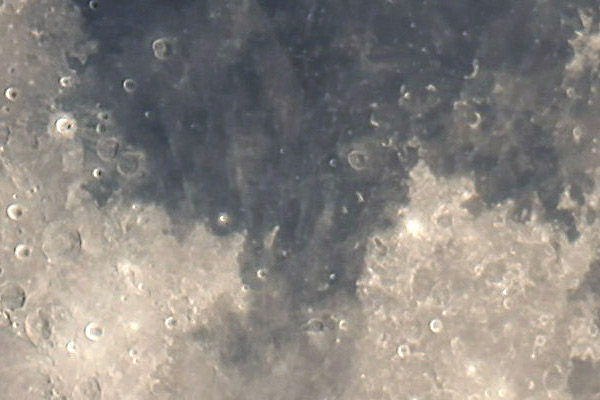
Here are my first two successful attempts at video astronomy with
the 60Da. I used movie crop mode to record a 640×480-pixel
frame at full resolution. The camera was set for manual exposure, and I
controlled the exposure by adjusting the shutter speed and the ISO setting
(unfortunately neither was recorded).
Video astronomy is the key to high-resolution lunar and planetary imaging.
It used to be thought that we were using software to pick out moments of
exceptionally steady air. Actually, we're doing something much more subtle:
turning a random blur into a Gaussian blur that can be undone.
(The sum of independent random variables, regardless of their distribution,
has a Gaussian distribution.) The software to do this is RegiStax.
When I know a little more about how to do this, I'll write an article on
my DSLR pages. But here's what I know right now:
The Canon produces MOV files, which RegiStax doesn't take.
There are many ways to convert MOV to AVI, and almost all of them are wrong.
What I mean is that almost all of them perform further compression on the image,
producing lots of spurious streaks and even polygons when RegiStax brings out
the fine detail.
Here's one way to do it right: Use WinFF, which is a free
video format converter — an exceptionally good one, not plagued by adware
like its rivals! Tell it you want to convert to AVI, and specifically
"MS Compatible AVI". Click "Options" and on the "FFmpeg" pane, add the
additional command line argument "-vcodec rawvideo" (no quotes).
You'll get large AVI files that are pleasing to RegiStax.
Are they free of artifacts? Well, the converter doesn't add artifacts.
But the Canon is itself recording compressed video. The jury is still out as
to whether the streaks in Mare Tranquillitatis in the second picture are all
genuine. I think they are.
Permanent link to this entry


|
2012
August
26(Extra)
|
Apollo 11 landing site
In honor of astronaut Neil Armstrong, who died yesterday (August 25) and who
was the first human being to set foot on a celestial object other than the earth,
I've marked the Apollo 11 landing site in my moon picture from August 22.

Permanent link to this entry


|
2012
August
26
|
"Feature transfer error" installing MaxIm DL
[UPDATE: For the solution click here.]
With the new camera, I needed a new version of
MaxIm DL, so I renewed my subscription
and downloaded version 5.22.
And it wouldn't install! Here's what I saw:
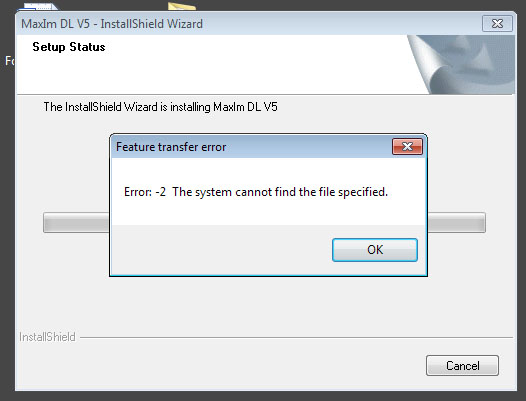
It didn't take me long to determine that this is
a problem with InstallShield, not a problem with MaxIm DL.
I didn't find a quick solution.
Uninstalling the previous version didn't help.
Nor did emptying the TEMP and %TEMP% folders.
Successful workaround:
I simply logged into a different user account (which also has administrator privileges)
and did the installation from there.
I'm guessing some kind of registry corruption in HKEY_CURRENT_USER might be
the problem, but I don't know.
This is one of the many reasons why even a single-user machine needs more than
one administrator account. If you corrupt your only administrator account, you're sunk!
Permanent link to this entry


|
2012
August
25
|
First stars (and nebulae)!
|
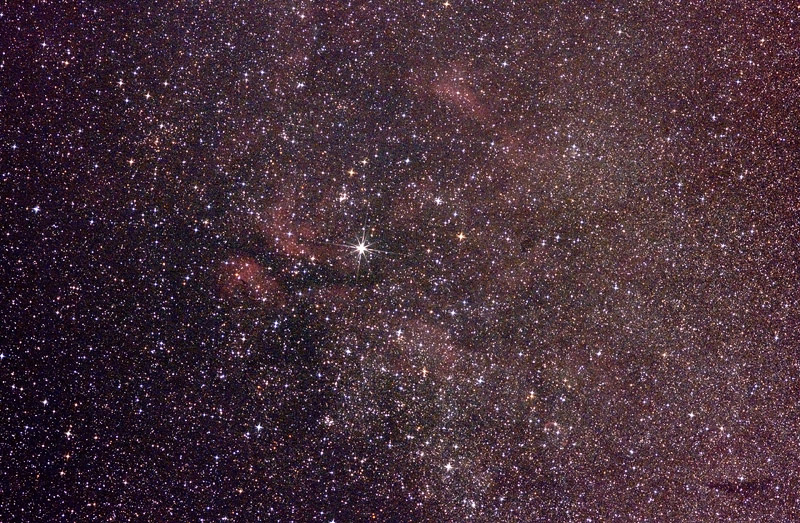
|
| |
Here's my first deep-sky photograph with the Canon 60Da.
It was taken under very adverse conditions — in town,
under a hazy sky with the quarter moon low in the western sky.
Stack of six 3-minute exposures and three dark frames,
Sigma 105-mm f/2.8 lens at f/5.6 with wire crosshairs in front to
add diffraction.
No filter.
Processed with DeepSkyStacker Beta and Photoshop; slightly cropped.
Here's another rendering of it with more red to bring out the nebulae:
|
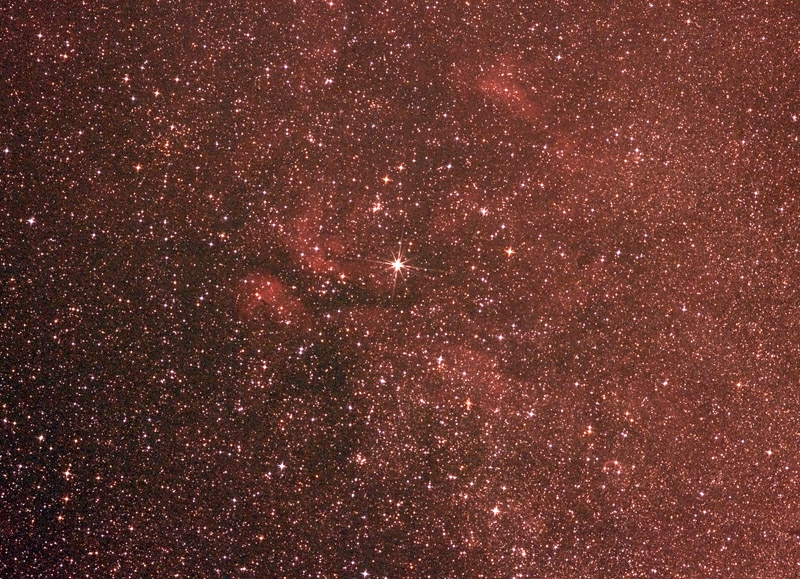
|
| |
This is the star Gamma Cygni surrounded by several nebulae
(clouds of very thin hydrogen gas), glowing red at just the wavelength
that the 60Da picks up and ordinary DSLRs don't.
I'm impressed by its performance.
Normally there would be many more dark frames, but I was getting
used to the equipment and ran short of time.
If there is any noise from insufficient dark frame correction,
I can't see it.
Permanent link to this entry


|
2012
August
24
|
Short notes
Much to come: I've photographed stars and nebulae with the 60Da and am going to
post some results, along with some technical notes, soon. Stand by for pictures...
The end of Kodak film? Kodak has
announced that it is
going to sell off its film business —
except for motion picture film, which it will keep making.
I'm slightly puzzled because still-camera film and motion-picture film are so
nearly the same thing. In fact, many 35-mm photographers would be quite happy
to respool Kodak motion-picture film
and use it in their cameras.
There are black-and-white "reversal" (direct positive) films that can easily
be developed as negatives; color negative films; and even, still, an Ektachrome.
In fact, back in the 1970s, respooled motion-picture film was popular.
Companies such as Seattle FilmWorks
bought the remnants of rolls that were too short
for movie studios to use (like under 200 feet) and sold it for still-camera use.
If processed correctly, it worked well.
You can recognize 35-mm movie film by the shape of the perforations —
the short ends of each rectangle bulge out. Still-camera film has perforations that
are rectangular with all four sides straight, with rounded corners.
I wonder if Kodak plans to keep making film and sell off the business of
marketing it. Motion-picture film is sold to relatively small numbers
of customers that use enormous amounts of it (many thousands of feet per day,
for copying as well as for original filming; a single copy of a feature-length
movie can take 10,000 feet of film).
That is very different from trying to sell Grandma a 3-foot-long roll of Kodacolor
at the Wal-Mart every few months.
Or Hollywood might start using Fuji film —
the lineup is impressive.
And, anyhow, film cinematography is quickly being replaced by
very high-resolution video,
with electronic projectors in the theaters.
Hoax alert: Romney was not "too important to go to Vietnam."
You're hearing about a spoof (a fictional, humorous piece) from The Onion,
not a real statement by Romney. Details here.
Permanent link to this entry


|
2012
August
23
|
Infrared (?) with the 60Da

This is what happens when you take pictures with a Canon 60Da
and a Schott (B+W) 092 filter.
This is not exactly infrared — it is a narrow band of
wavelengths around 700 to 750 nm, as best I can figure out.
The picture has to be composed in Live View because nothing
is visible in the viewfinder.
But the camera has no trouble autofocusing and
autoexposing. (Well, maybe it overexposed a little.)
Because this is not a deep infrared picture, it does not brighten up
green vegetation as much as traditional infrared film.
But it does brighten it to some extent; the shrubbery in the
picture is, in real life, a good bit darker than the columns
or brick walls.
I have not yet determined whether this is useful for
forensic infrared photography.
Permanent link to this entry


|
2012
August
22
|
First light with the Canon 60Da
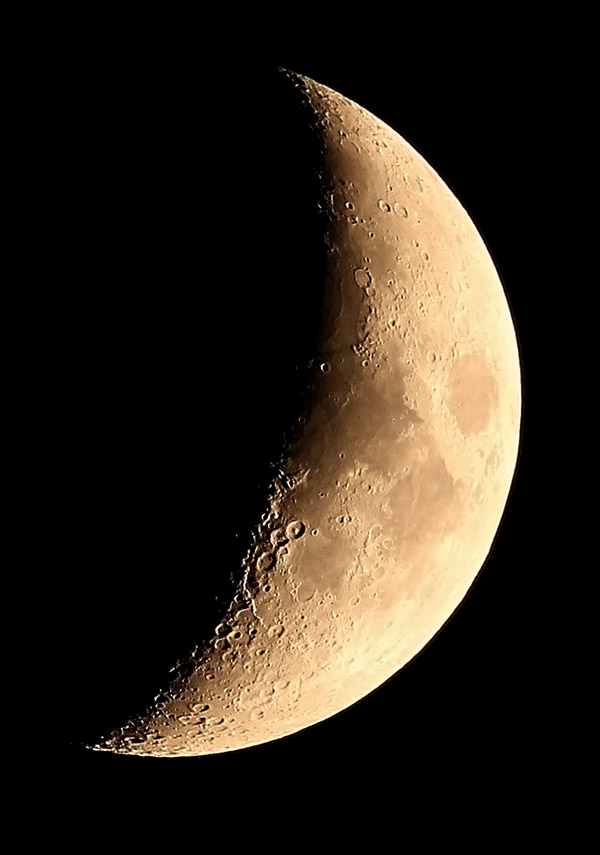
"First light" is what observatories call it when the first image or observation
is made with a new instrument. Here is my "first light" picture with the 60Da.
Yes, I know it's a camera designed for deep-sky work. (At least, the only real
difference between the 60Da and the plain 60D has that purpose.) But the moon was
the only thing I could photograph in our hazy sky just now, so here it is.
The flip-out screen on the back of the camera is really handy.
This was taken with a Canon 300-mm f/4 lens and ×1.4 converter
on a fixed tripod.
I took six frames in Silent Shooting Mode 2 with 2 seconds of shutter delay
(to minimize vibration) and stacked and sharpened them with RegiStax.
The orangeish color is realistic — that's how the moon looked, fairly
close to the horizon.
Permanent link to this entry


|
2012
August
21
|
Color rendition in daytime photography
with the Canon 60Da
My new Canon 60Da has arrived. This is the Canon camera optimized
for astrophotography, with extended response at the red end of the spectrum.
The burning question in my mind was:
How is the color rendition when you use this camera in the daytime?
Canon's warnings led me to expect that it might be unusable.
Other people told me it might be rather good.
My initial result?
The 60Da is a lot like Ektachrome film, and nature photographers are
going to like it.
But its rendering of human skin is just a bit rosy.
I took these test shots outdoors, near sunset, on a partly cloudy day;
the light was a bit more reddish than ordinary daylight.
Bear in mind that the difference between the 40D and the 60Da isn't just
color balance — the 60Da is actually picking up light at
longer wavelengths. Accordingly, this is not something Photoshop can
simulate or undo. There could perfectly well be two objects that look
alike to one camera and look different to the other one.
40D, auto white balance:

60Da, auto white balance:

40D, daylight white balance:

60Da, daylight white balance:

40D, daylight white balance:
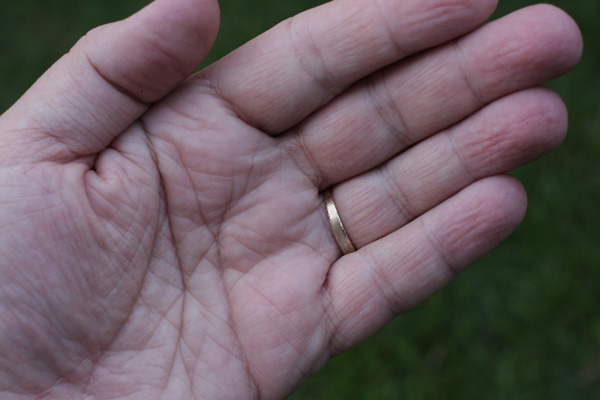
60Da, daylight white balance:
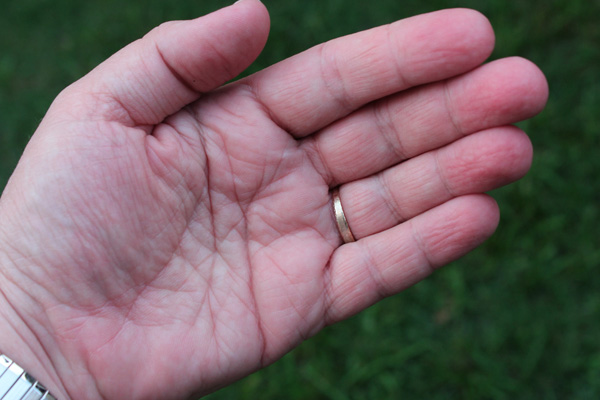
Note: All the 40D exposures are darker because highlight tone priority
was set, causing the exposure meter to respond differently.
Judge these by color, not by brightness. I didn't catch this
discrepancy until the test session was over.
There you have it. Which picture of my hand is more realistic?
Hard to say! My hand is a bit yelllower than either one.
Allowing for that, the truth is somewhere between the two pictures.
Much more to come on this subject.
Permanent link to this entry


|
2012
August
20
|
New DSLR astrophotography web page
Click here
to see what I spent the weekend writing.
Permanent link to this entry


|
2012
August
17-19
|
What makes a person sophisticated?
Our Secretary of State, Hillary Clinton, was recently asked by an interviewer,
"What designers do you prefer?"
She hesitated for a moment and replied, "Designers of clothes?"
You could see the clash of two mindsets.
Ms. Clinton was thinking about U.S. foreign policy.
The interviewer was thinking about status symbols and fashionableness.
"Here is an important person, and she must have gotten to be
important by being fashionable..."
Behind it is a really important point.
Sophisticated people aren't people who have things.
They're people who know and do things.
Ms. Clinton didn't get to be Secretary of State by carrying designer handbags.
We've known plenty of people who wanted to achieve success by having status symbols —
fashionable clothes, cars, iPads, or even cameras.
But you aren't successful because of what you have.
You're successful because of what you know and do.
And if you know and do enough, it doesn't matter at all what you have.
It's as if you could get rich by spending money lavishly to make people think you're a rich person.
And aren't we surrounded by people who are trying that?
Permanent link to this entry
Short notes
Mystery song found: The other day I heard a song on the radio that I had heard
often in the 1970s. Thanks to Sirius XM satellite radio, I was able to see the title
on the display. It was Eye Level,
the theme from a British TV show. (If you click through, ignore the video,
which has nothing to do with the song, and just
listen to the sound.)
Mystery song query: Also back in the 1970s there must have been five hundred different
instrumental performances of the Beatles' "Norwegian Wood" (a beautiful tune that benefits greatly from
having its lyrics left out). From the radio I recorded a particularly amusing one, adorned
with nature sounds as if the song were really about a forest (maybe even a tropical one).
I haven't tracked it down since and don't know who perpetrated, I mean performed, it.
It wasn't Frank Chacksfield, who used nature sounds in other songs but not this one.
And (I hasten to add) it wasn't any number of musicians who did it in the 1990s or later;
this was extant in 1974.
Does anybody know?
Owen Shelton pointed out to me that touchscreen interfaces in cars are a Bad Idea.
Fingers can recognize knobs and buttons by their shape and position.
Fingers can't read a touchscreen display.
And eyes are supposed to be looking at the road.
I have something big coming up on my DSLR astrophotography page, but it's not
quite ready to be unveiled.
Permanent link to this entry


|
2012
August
16
|
Advice to incoming graduate students
Two things...
(1) We assume that you are interested in your subject and are avidly
reading about it all the time.
We're going to ask you what you've been reading lately.
If you stay away from your subject until we make you study it,
that's a very bad sign.
(2) If you only read what you can find through Google,
you don't know what you're missing.
We have lots more. Explore our libraries and especially the
online resources available through the University, which you can't
access without a University ID. Start with Web of Science.
Permanent link to this entry


|
2012
August
12-15
|
Frazzled new year!
The University of Georgia's school year is off to a rough start.
Two AI courses today were scheduled for classrooms that already had
other classes in them.
There were reports of problems with the mainframe computer system
that handles registration and scheduling (maybe that's what mixed
up the classrooms).
The AT&T cell phone system is malfunctioning on and near campus,
perhaps due to overloading.
And the libraries are not fully functional because
of not-quite-complete remodeling and missing furniture.
Permanent link to this entry


|
2012
August
9-11
|
Canon's new 40-mm f/2.8 "pancake lens"
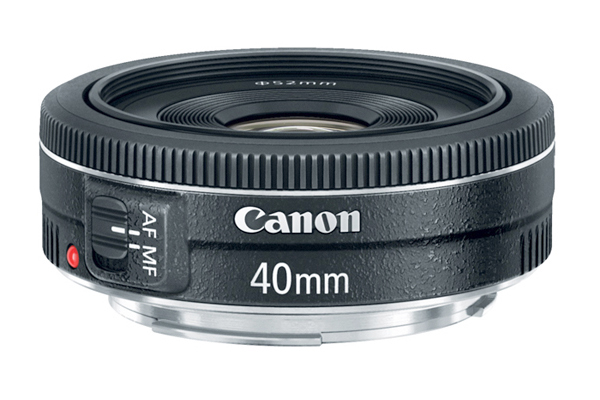
Canon has come out with a new 40-mm lens for their DSLRs.
This type of lens is called a "pancake lens" because of its flat form factor.
Nikon and Olympus, among others, have made "pancake lenses" for years; they
are the most compact lens you can put on an SLR.
But I think Canon has outdone them.
In fact, I saw the lens in a store, looked up its
test results,
and went back and bought one the very next day.
The design is a distant descendant of the classic Zeiss Tessar, but
with more elements, one of them aspherized.
It is a new-technology lens, better than what we could get in the 1990s,
and the test results show outstanding sharpness and lack of distortion.
Why would you want a lens like this?
Besides compactness, it will do two things that a zoom won't.
It will give you undistorted images (no barrel or pincushion distortion)
that are sharp from center to corner.
Admittedly, taken at f/10, this was not a stiff test, since a cheaper lens
could have done this well; I need to test it at f/2.8, especially doing astrophotography.
Published tests indicate that it will perform well.
Sample picture:

Center of sample picture, at full size:

Corner of sample picture, at full size:

U.S. web page here;
Japanese page, with optical diagram, here.
Permanent link to this entry


|
2012
August
7-8
|
Split-body enclosures for electronic gadgets
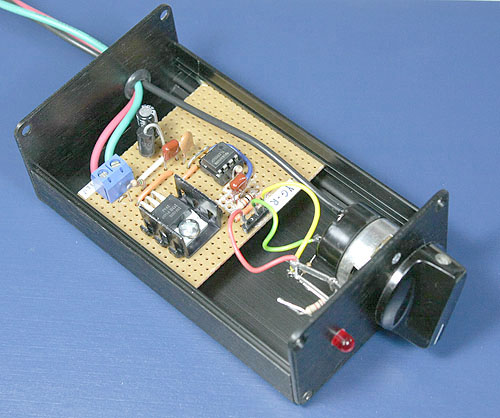
My latest electronic creation, to be described here in more detail later,
is a pulse-width-modulated dimmer for automotive lights.
It will enable me to turn on the fog lights of my car at greatly reduced (and variable)
brightness when I need to move the car a short distance on an astronomy
field without disturbing the astronomers.
What I want to mention tonight is the
Context Engineering split-body enclosure
that I built it in.
This was very satisfying to work with.
The enclosure is made of heavy aluminum and consists of four pieces:
the upper and lower shells (which match) and two end caps.
The shells have several slots for accommodating one or more
circuit boards. (I cut my circuit board to be a tight press-fit and then
added a drop of glue to keep it from shifting.)
You can remove any of the four parts independently of the others.
Here you see it with the top shell off.
I only want to caution other users about one thing. The screws that hold
the end caps on (and hold the whole thing together) have to be inserted
carefully. They are cutting their own threads in slots, not in threaded holes.
Oddly, the operation required a #1 Phillips screwdriver, a size that was common
40 years ago and is uncommon today.
Permanent link to this entry


|
2012
August
6
|
How bad is the economy, now, really?
If you believe some of the headlines, we're in "another Great Depression."
That's not how I see it. The facts just don't support that view.
I know a lot is wrong. In particular, government spending is way too high —
not just because of irresponsibility, but also because the recession has cut the
government's income. And unemployment is higher than we'd like it.
But consider this chart. Here's the unemployment rate (from BLS, seasonally adjusted)
from 1950 to the present. Today's rate of 8.3% is higher than we'd like, but...

...it was higher in 1983 and in 1975, and it's actually not far from the long-term
average, around 6%.
We had some periods of unusually low unemployment. Two of them were recent,
in the late 1990s and mid-2000s. The other two were the Korean War and the Vietnam War.
So I suppose if we want really low unemployment, we can have a housing bubble, a dot-com bubble,
or a war. I don't favor any of those.
So, I would chalk it up as a success that unemployment, though higher than the long-term
average, is not catastrophically high and is approaching normal.
Who has noticed, also, that the dollar is holding its value remarkably well?
We've kept the inflation rate around 2.5% for a long time now.
That contrasts sharply with periods of "prosperity" that were marked by high inflation,
such as the late 1960s. In those days, people clamored for the dollar to hold its value.
Well, now it's doing it.
And what about confidence in the dollar? Foreigners are flocking to buy Treasury
bonds that pay almost no interest, just because they'd rather hold
bonds denominated in U.S. dollars than their
own currency. This is the "borrowing from China" that you hear about.
It is not a secret deal between governments. It is simply that the U.S. is finding it very
easy to sell bonds all over the world. We set the terms of the bonds. The lender can't
call them due. The lender even has to take the risk that we might not pay at all.
And if you like world peace, isn't that the way you want it? Lots of other countries now
would suffer terrible financial losses if they went to war against us. Especially China, which
has historically been one of our enemies.
We're never going to have the bubble economy again. Never again will we think we're selling twice
as many houses and cars as people want to buy. Not all those old jobs are coming back. But new
opportunities are opening up everywhere.
Permanent link to this entry


|
2012
August
5
|
What's a good investment these days?
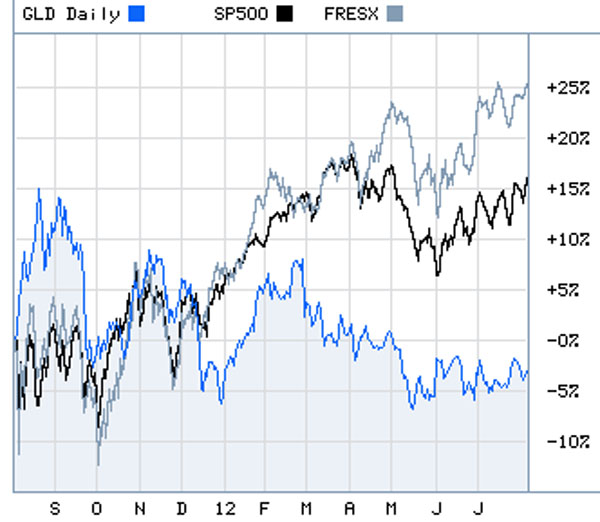
Here you see the past year of a Fidelity real estate
mutual fund (FRESX), the stock market (the S&P 500 average), and the price of gold
(actually an ETF that is tied to it).
Right now, a lot of people are pushing gold as an investment and saying to stay away from
real estate. I think that's the exact opposite of an appropriate response to conditions.
Maybe some of the advice is coming from people who want to unload their gold before it goes
down further.
Permanent link to this entry


|
2012
August
4
|
Etymology of veterinarian
I claim to know Latin and Greek. With that in mind, I found myself looking
at the word veterinarian and being puzzled by what I saw.
It looks Latin, but I didn't see anything in it having to do with animals
or doctoring.
I saw what looked like the word for "old" (vetus, genitive veteris) followed
by at least two suffixes.
So I did some digging. It turns out that at one time, the Romans called their beasts
of burden veterinae, literally "old ones," meaning grown-up, mature animals —
old enough to need the services of a veterinarius.
Literary query: Did Sir Walter Scott actually write that business success
depends on "mental attitude"? The quote is all over the Internet, but I haven't found
a reference to Scott's works. I'm suspicious because "mental attitude" sounds too modern
for someone writing before 1832, but it could be... Does anyone know?
Permanent link to this entry


|
2012
August
1-3
|
Coma Berenices
One of my accidental errors is in print in the latest
Journal of the British Astronomical Association.
I answered a question about the name of a constellation,
and got it slightly fumbled — so let me get it straight.
Every constellation name has two forms, nominative and genitive,
such as Centaurus and Centauri.
The latter is used with a star designation, such as Alpha Centauri.
The constellation Coma Berenices ("Berenice's Hair") is often
misspelled in the genitive. The correct genitive is Comae Berenices
("of Berenice's Hair"). The trick is, Berenice is a Greek name,
not Latin. People who know Latin want to make the genitive into
Comae Berenicis, which looks Latin but does not quite make sense,
and it is thus misspelled in some handbooks.
All of that, I got right. My misstatement is that I said,
"Berenice is a Greek third-declension noun." That is over-hasty typing.
What I meant was,
"Berenice is a Greek first-declension noun,
not a Latin third-declension noun."
Now you know.
Permanent link to this entry


|
|
|
This is a private web page,
not hosted or sponsored by the University of Georgia.
Copyright 2012 Michael A. Covington.
Caching by search engines is permitted.
To go to the latest entry every day, bookmark
http://www.covingtoninnovations.com/michael/blog/Default.asp
and if you get the previous month, tell your browser to refresh.
Entries are most often uploaded around 0000 UT on the date given, which is the previous
evening in the United States. When I'm busy, entries are generally shorter and are
uploaded as much as a whole day in advance.
Minor corrections are often uploaded the following day. If you see a minor error,
please look again a day later to see if it has been corrected.
In compliance with U.S. FTC guidelines,
I am glad to point out that unless explicitly
indicated, I do not receive substantial payments, free merchandise, or other remuneration
for reviewing or mentioning products on this web site.
Any remuneration valued at more than about $10 will always be mentioned here,
and in any case my writing about products and dealers is always truthful.
I have a Tektronix
TDS 210A oscilloscope on long-term loan from the manufacturer. Other reviewed
products are usually things I purchased for my own use, or occasionally items
lent to me briefly by manufacturers and described as such.
I am an Amazon Associate, and almost all of my links to Amazon.com pay me a commission
if you make a purchase. This of course does not determine which items I recommend, since
I can get a commission on anything they sell.
|
|
























